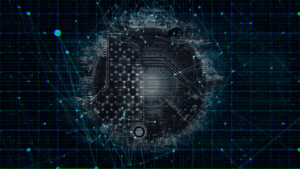In today’s landscape, where digitalization is predominant, corporate cybersecurity has become essential for all organizations. With the rise in cyberattacks, companies need to adopt robust strategies to protect their data and systems. In this article, we will discuss best practices and strategies to strengthen your company’s digital defense, ensuring the security and integrity of information.
The Importance of Corporate Cybersecurity
Corporate cybersecurity is essential for protecting a company’s digital assets against a variety of cyber threats. These threats include malware attacks, which can compromise system integrity, phishing, which aims to steal sensitive information through fraudulent communications, and ransomware, where data is encrypted by criminals until a ransom is paid. Additionally, network intrusions can allow hackers to access confidential information, causing significant damage beyond the mere loss of data.
The impacts of these attacks are wide-ranging and devastating. Data loss can paralyze operations, result in revenue loss, and compromise critical information. Financial losses can stem from both business interruptions and the costs associated with recovery and strengthening of post-attack cyber defenses. Furthermore, reputational damage can be irreparable, undermining the trust of customers and business partners. Trust is an invaluable asset, and its loss can take years to regain, if it can be regained at all.
Therefore, investing in cybersecurity is not just a preventive measure but a strategic necessity to ensure business continuity and maintain customer trust. Companies must adopt a proactive approach, implementing advanced security technologies, training employees on security best practices, and establishing clear incident response protocols. In this way, cybersecurity becomes a pillar for organizational resilience, allowing the company to operate securely and reliably in the digital environment.
Key Cybersecurity Strategies
Risk Assessment: A detailed risk assessment is the first step in strengthening cybersecurity. This involves identifying and analyzing vulnerabilities in the company’s IT systems, as well as potential threats. Understanding the risks allows the company to develop an effective action plan to mitigate these threats and protect its assets, whether they are company information, customer data, or financial resources.
Implementation of Firewalls and Intrusion Detection Systems: Firewalls are the first line of defense against cyberattacks, monitoring and controlling network traffic to block unauthorized access. Complementing the firewall with Intrusion Detection Systems (IDS) allows for real-time identification of suspicious activities, offering an additional layer of protection. These systems continuously monitor network traffic and alert the IT team to potential threats.
Multi-Factor Authentication (MFA): Multi-factor authentication is an effective strategy to protect accounts and systems. By requiring multiple forms of identity verification, such as passwords and codes sent to mobile devices, MFA makes it difficult for attackers to gain access even if they obtain a password. Implementing MFA at all critical access points is fundamental to strengthening digital security.
Regular Updates and Patches: Keeping all systems and software up to date is essential to prevent cyberattacks. Vulnerabilities in outdated software are a common entry point for attackers. Establishing a regular schedule for updates and patches helps ensure that all known security flaws are promptly addressed.
Employee Education and Training: Employees are often the first line of defense against cyberattacks. Training staff to recognize threats like phishing emails, secure password practices, and how to respond to security incidents can significantly reduce the risk of successful attacks. Continuous training programs keep staff updated on cybersecurity best practices.
Advanced Cybersecurity Strategies

Cloud Security
With the increasing adoption of cloud solutions, protecting data stored and processed in the cloud is crucial. This includes implementing encryption, strict access control policies, and proper configuration of cloud services to ensure that sensitive data is always protected against unauthorized access.
Behavioral Analysis and Artificial Intelligence
Behavioral analysis and artificial intelligence (AI) are powerful tools in threat detection. These systems analyze normal user behavior and identify anomalies that may indicate malicious activities. AI can process large volumes of data and detect patterns that would be difficult to identify manually, providing a quick and effective response to threats.
Incident Response Plan
Having a well-defined incident response plan is essential for effectively handling cyberattacks. This plan should include clear procedures for detecting, containing, eradicating, and recovering from security incidents. Regular testing of the incident response plan ensures that the team is prepared to respond quickly and minimize damage.
Continuous Monitoring and Security Audits
Continuous monitoring of systems and networks allows for immediate detection of suspicious activities. Real-time monitoring tools and regular security audits help identify vulnerabilities and ensure that security measures are working as expected. Audits also provide valuable insights for continuous improvement of the company’s security posture.
Conclusion
Strengthening corporate cybersecurity requires a multifaceted approach that combines risk assessment, implementation of advanced technologies, and continuous employee training. With the right strategies, your company can protect its digital assets, maintain customer trust, and ensure business continuity in an increasingly threatening environment.
If you need assistance implementing robust cybersecurity strategies in your company, contact STWBRASIL.. Our team of experts is ready to help protect your data and strengthen your digital defense.





